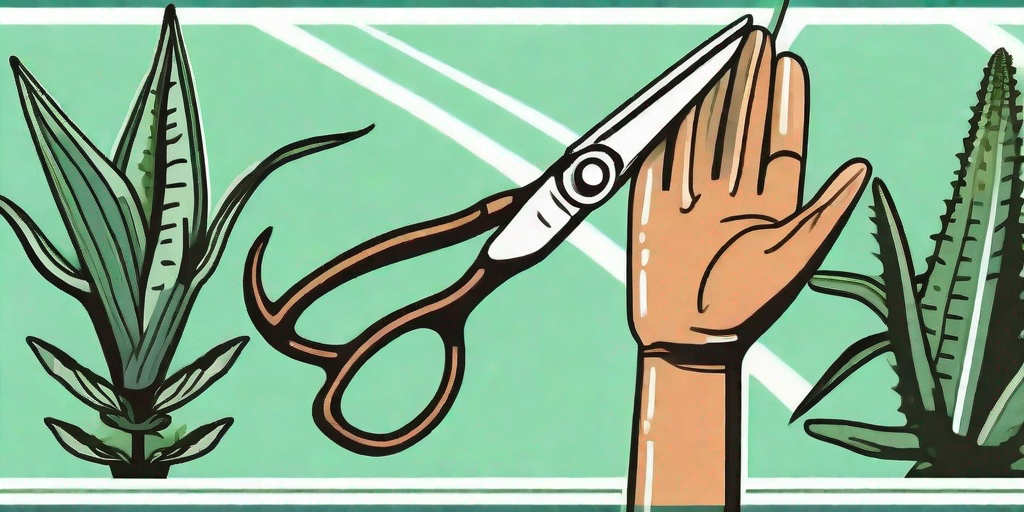
Stinging nettles are the bane of every hiker, gardener, and outdoor enthusiast's existence. These pesky plants have a knack for popping up where they're least wanted, and their sting is a sensation you won't soon forget. But fear not, dear reader, for we have a foolproof guide to help you banish the itch and say goodbye to stinging nettles for good.
Understanding the Enemy: The Stinging Nettle
What is a Stinging Nettle?
Before we dive into the battle plan, let's get to know our enemy a little better. The stinging nettle is a plant that's native to Europe, Asia, northern Africa, and western North America. It's known for its heart-shaped leaves and the tiny hairs that cover its stems and leaves. These hairs contain a cocktail of chemicals that can cause a painful sting when they come into contact with skin.
But it's not all bad news. Despite their sting, nettles are actually quite beneficial. They're rich in vitamins and minerals, and they've been used in traditional medicine for centuries. So, while we're all for banishing the itch, let's not forget that nettles have their good side too.
Why Do Stinging Nettles Sting?
Stinging nettles have developed their sting as a defense mechanism against herbivores. When an animal (or a human) brushes against the plant, the tiny hairs break off and release their chemical cocktail into the skin. This causes a reaction that we experience as a painful sting.
The chemicals in the sting include histamine, acetylcholine, serotonin, and formic acid. These substances cause inflammation and pain, and they can also trigger an allergic reaction in some people. So, if you've ever wondered why nettles sting so much, now you know.
How to Avoid the Sting
Dress Appropriately
The best way to avoid the sting of nettles is to avoid contact with them in the first place. This means dressing appropriately when you're going to be in an area where nettles are common. Long pants and long-sleeved shirts are a must, and gloves can be a lifesaver if you're going to be handling the plants.
It's also a good idea to wear sturdy shoes and socks, as nettles can sting through thin material. And don't forget to check your clothes for hitchhiking nettles before you get back in your car or head inside your house.
Know Your Plants
Another key to avoiding the sting of nettles is to know what they look like. Nettles are usually about 1 to 2 meters tall, and they have heart-shaped leaves with serrated edges. The leaves and stems are covered in tiny hairs, which are the source of the sting.
Nettles often grow in clusters, and they prefer rich, moist soil. They're commonly found in forests, fields, and along rivers and streams. So, if you're in an area that fits this description, keep an eye out for nettles and give them a wide berth.
How to Treat a Nettle Sting
Immediate Action
If you do get stung by a nettle, the first thing you should do is wash the area with soap and water. This will help to remove any nettle hairs that are still stuck in your skin. Then, apply a cold compress to help reduce swelling and numb the area.
Over-the-counter pain relievers and antihistamines can also be helpful for managing the pain and itching. And whatever you do, try not to scratch! Scratching can cause the sting to spread and can lead to infection.
Home Remedies
There are also several home remedies that can help to soothe a nettle sting. Applying a paste of baking soda and water can help to neutralize the acid in the sting, while aloe vera can help to soothe the skin and reduce inflammation.
Other remedies include applying a slice of cucumber or a cold tea bag to the sting, or soaking the area in a bath of oatmeal and warm water. Just remember, these remedies are not a substitute for medical treatment, so if your symptoms persist or worsen, seek medical attention.
FAQs
Can Stinging Nettles Cause an Allergic Reaction?
Yes, stinging nettles can cause an allergic reaction in some people. Symptoms can include hives, difficulty breathing, and swelling of the face, lips, tongue, or throat. If you experience any of these symptoms after being stung by a nettle, seek medical attention immediately.
Are There Any Benefits to Being Stung by a Nettle?
Believe it or not, some people actually seek out the sting of nettles for its purported health benefits. Nettle stings have been used in traditional medicine to treat conditions like arthritis and chronic pain. However, more research is needed to confirm these benefits, and we don't recommend trying this at home without consulting a healthcare professional.
Can You Eat Stinging Nettles?
Yes, you can eat stinging nettles! Once the nettles are cooked, the sting is neutralized and they're safe to eat. Nettles are rich in vitamins and minerals, and they can be used in a variety of dishes, from soups and stews to teas and smoothies. Just be sure to wear gloves when you're harvesting them!
Conclusion
Stinging nettles may be a nuisance, but with a little knowledge and preparation, you can avoid the sting and even make use of these versatile plants. So, don your gloves, arm yourself with your newfound knowledge, and venture forth into the great outdoors. The nettles won't know what hit them.
And remember, if you do get stung, it's not the end of the world. With the right treatment, the pain and itching will soon be a distant memory. So, say goodbye to stinging nettles and hello to itch-free adventures!











